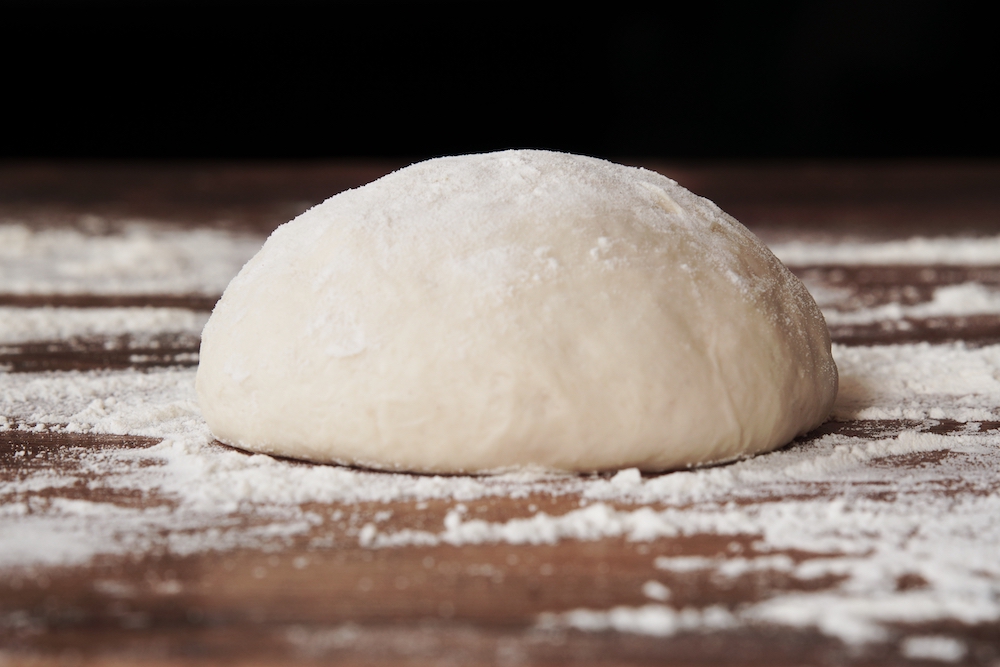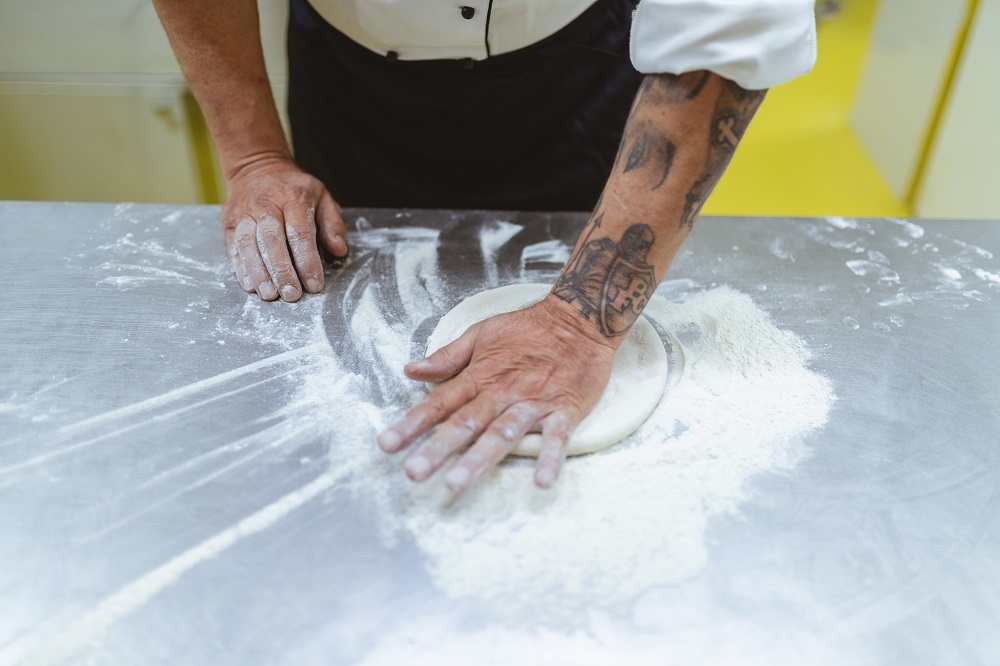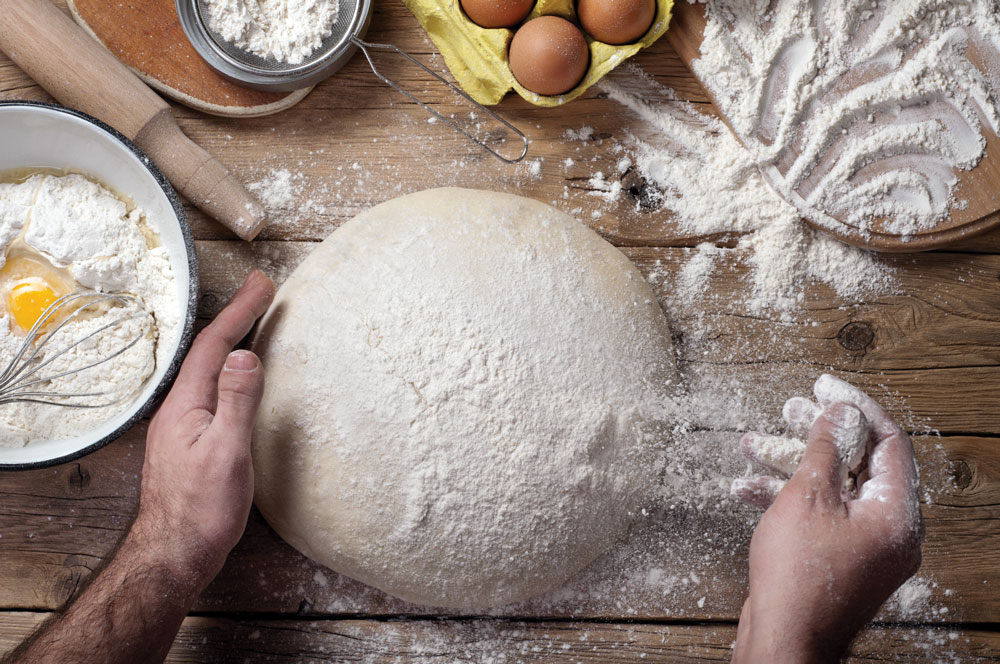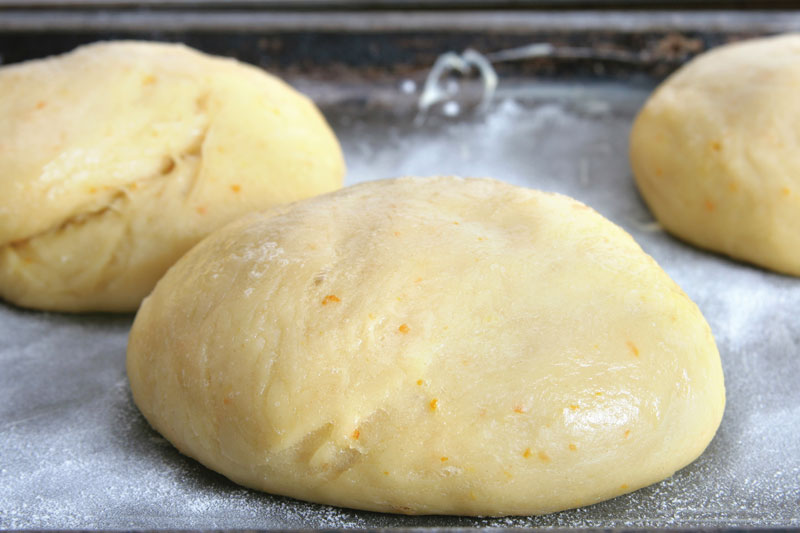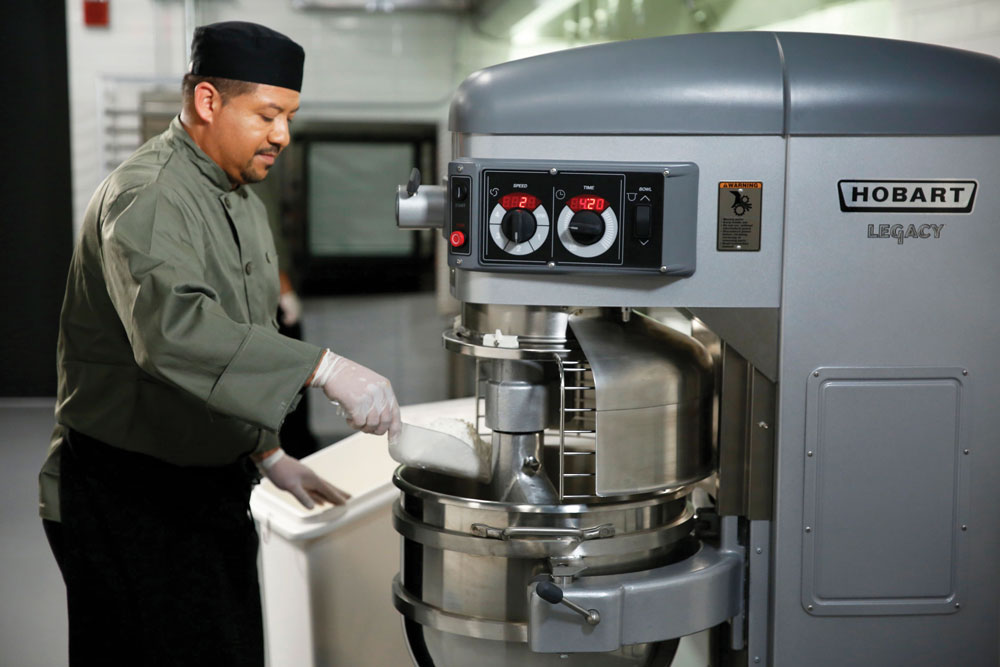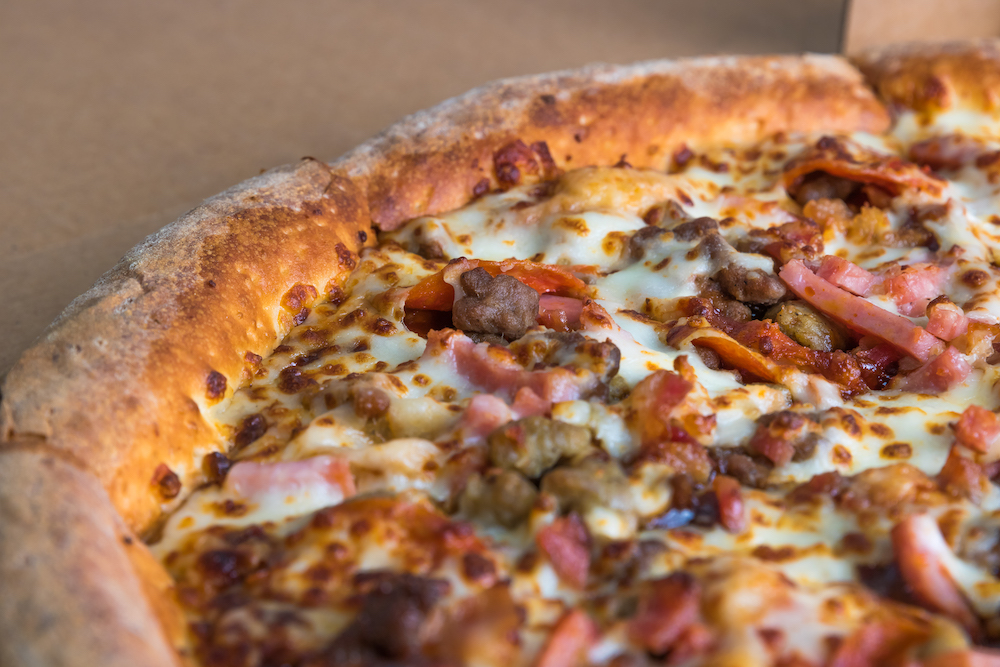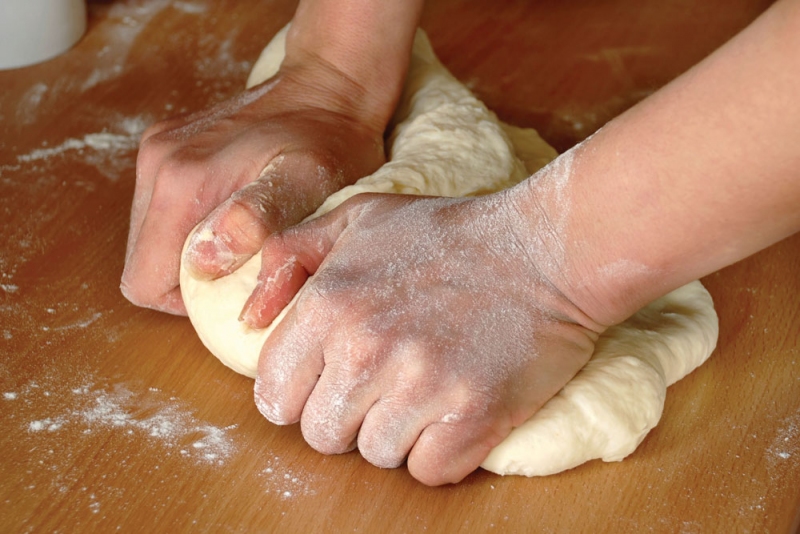Question:
I've heard of French bread pizza but I've never made it before. What can you tell me about this type of pizza?
Answer:
French bread pizza has actually been around for quite some time. It is a common sight in the frozen foods display case at your local supermarket. The pizza seemed to get its start back when thick crust pizzas were coming into their own, and there was little or no technology available for producing thick crust pizzas on commercial, high-speed production lines.
By taking a specially formed French bread and splitting it in half, lengthwise, and then cutting it in half again to one half of its length, it was possible to make a thick crust pizza with the added benefit of actually having something a little different from all of the other pizzas presently on the market (a great marketing tool). While the idea of building a pizza on a slab of French bread may seem counterproductive, it really has some benefits.
That slab of French bread will bake up nice and crispy, and it also has a desirable, tender eating characteristic. In view of the rectangular shape of the pizza, it is easy to hold and eat with one hand, bringing it into the realm of a convenience food. So much so, that a number of companies have gone to making rectangular shaped thick crusts just for the convenience store market.
So, how can you make these great little pizzas? You probably won't have access to the special clam shell design pans that the wholesale manufacturers have (these pans produce a French loaf with a flat top on both the top and bottom of the loaf, when the loaf is split, both the top and bottom become pizza bases, and the flat spot helps to keep the pizza sitting upright. Begin with either a French bread or roll (hot tip: Hoagie buns work great) and cut them laterally from end to end, creating a top and bottom half. Cut to length if necessary. Melt some table grade margarine and brush it onto the surface of the crumb. As the margarine recrystallizes (hardens) it will prevent sauce from penetrating into the crumb portion of the roll. You can apply any pizza sauce, but I like to use a slightly thicker sauce than I normally use on pizzas because it clings to the bread better than a thin, watery sauce does.
Now apply your favorite cheese and toppings and you're ready for the oven. If you're using a deck oven you might want to use a screen or something under the pizza to keep the crust from burning where it contacts the deck, if you use an impingement oven, you might need to reduce the temperature down to 400-425°F and make a cradle to hold the pizza upright as it goes through the oven. This can be easily done with a piece of aluminum foil. As soon as the pizza comes from the oven it is ready for serving.
These little gems are great if you are located near a school where kids will come in for a quick, low cost lunch. Or they are also great for use in a pizza cart, in a food court, convenience store, or just about anyplace where the pizza will be eaten on the run. Don't worry about the crust being too bread-like. It will serve up crispy and tender. For a bit of added variety, mix a little garlic or other savory herbs into the margarine that you brush onto the crumb portion.
Question:
I can see all kinds of advantages to pre-saucing my dough skins, but I'm assuming that there are also some disadvantages too. Are there any, and if so, what are they?
Answer:
The greatest problem with pre-saucing of the dough skins is that it provides an opportunity for the sauce to soak into the dough, resulting in the development of that feared gum line just beneath the sauce and cheese. Once formed, this gum line is all but impossible to get rid of. So as the adage goes, the best defense is a great offense. Do every thing you can to prevent the formation of a gum line. Don't pre-sauce your crusts. Sure! That's easier said than done on a busy weekend night when pre-saucing might mean the difference between success and failure for the entire evening.
There are a couple of things that can be done to minimize the propensity of the sauce to soak into the dough. First, if it is within your power, work with a thicker, higher solids content sauce. My personal preference lies with a sauce with about 16 percent solids, made from the highest quality tomato products.
Two things are going on here. First, the higher solids sauce will exhibit less tendency to separate and soak into the dough skin, and second, most of the premium tomato products will exhibit a reduced tendency to separate while standing. This is a good thing as it is that separated water that has a nasty habit of soaking into the dough. As I always tell my students, watch your employees. If you see them stirring your sauce regularly, they're seeing it separate, and you can bet that it will separate again after it has been applied to the dough and is sitting in the cooler awaiting its number to be called.
The other thing that you can do is to apply a light coating of oil to the surface of the dough. The oil will provide a very effective moisture barrier between the dough and the sauce, thus greatly reducing any potential for the sauce to soak into the dough. No matter what steps you ultimately end up taking, it is always a good idea to establish a hard rule for how long a sauced dough can be held before it must be baked. My own personal experiences dictate that the dough should not be pre-sauced for more than two hours before it is used. To do so may be testing your luck rather than your skills.



